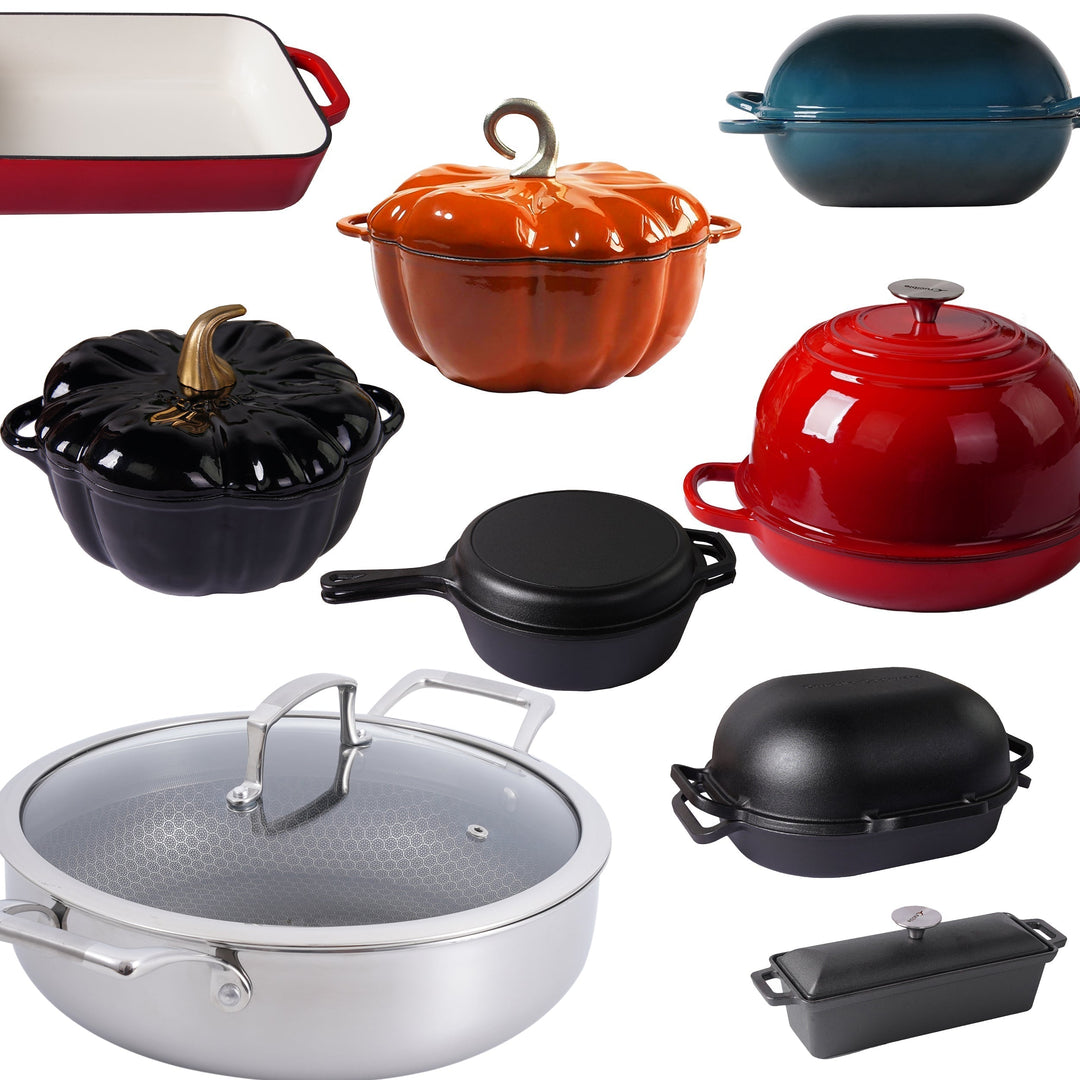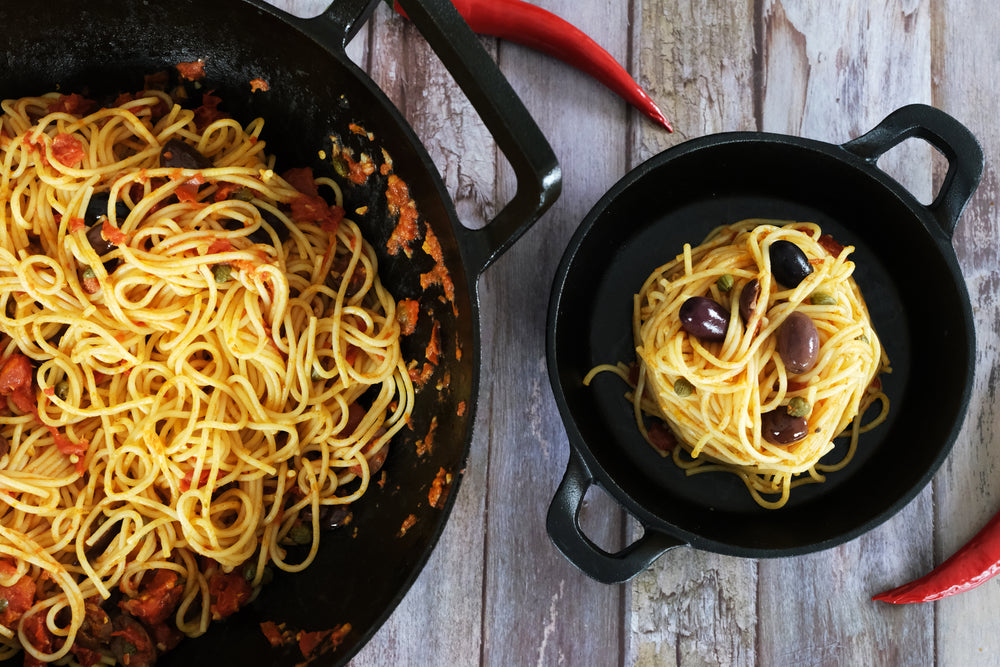Quels sont les différents types de poivrons ?

Le poivre est une épice couramment utilisée dans une grande variété de plats pour ajouter de la saveur et du piquant. Il existe de nombreux types de poivre différents, chacun avec son propre goût unique et son niveau de piquant. Dans cet article de blog, nous allons explorer les différents types de poivre et quand les utiliser en cuisine.
1. Poivre noir : Le poivre noir est le type de poivre le plus couramment utilisé. Il est fabriqué à partir du fruit vert non mûr de la plante de poivre Piper Nigrum, qui est cuit et séché jusqu'à ce qu'il devienne noir. Le poivre noir a une saveur forte et piquante et est souvent utilisé pour ajouter du piquant et de la profondeur de saveur aux plats. C'est également un ingrédient clé dans de nombreux mélanges d'épices.
Piper Nigrum est cultivé en Inde, au Sri Lanka, en Indonésie, en Malaisie, au Vietnam et au Brésil. Le poivre noir du Brésil a un goût différent des variétés asiatiques, probablement en raison du climat, du sol et de la méthode de récolte différents. Depuis l'Antiquité, le poivre noir d'Inde est considéré comme le meilleur, en particulier celui cultivé dans la ville de Tellicherry. D'autres épices qui accompagnent bien le poivre noir sont : le poivre blanc, le poivre vert, le piment de la Jamaïque, le piment de Cayenne, la feuille de laurier, le genévrier, le paprika, la coriandre, le cumin, le safran, le gingembre, le basilic, l'origan, la menthe et l'ail.

2. Poivre blanc : Le poivre blanc est fabriqué à partir du fruit mûr de la plante de poivre (Piper Nigrum, la même plante que le poivre noir), qui est trempé dans l'eau jusqu'à ce que les couches extérieures du fruit ramollissent et puissent être facilement retirées. La graine résultante est ensuite séchée jusqu'à ce qu'elle devienne blanche. Le poivre blanc est cultivé en Inde, en Indonésie, en Malaisie, en Chine et au Brésil. L'Indonésie représente la plus grande production de poivre blanc et celui provenant de l'île de Bangka est considéré comme le meilleur.
Le poivre blanc accompagne bien le poisson et les fruits de mer, le porc, le veau et l'agneau, la sauce béchamel, les épinards, le chou-fleur, la mayonnaise, la purée de pommes de terre, les sauces à la crème et les soupes blanches.
Le poivre blanc a une saveur plus douce que le poivre noir et est souvent utilisé dans des plats où un piquant plus subtil est souhaité et il est couramment utilisé dans des plats de couleur claire où le poivre noir serait visible.
Le poivre blanc se marie bien avec le poivre noir, le poivre vert, le piment de la Jamaïque, les feuilles de laurier, la muscade, l'estragon, le gingembre, la ciboulette et les câpres.

3. Poivre vert : Le poivre vert est fabriqué à partir de fruits de poivre non mûrs qui sont cueillis avant qu'ils n'aient la chance de devenir rouges ou noirs. La récolte a lieu six mois après la floraison.
Le poivre vert a une saveur plus fraîche et plus herbacée que le poivre noir ou blanc et est souvent utilisé dans des plats où un piquant plus subtil est souhaité.
Il existe trois façons de conserver le poivre vert : mariné dans du vinaigre ou de la saumure, séché à l'air et lyophilisé. Bien que le poivre vert soit cultivé au Brésil, à Madagascar, en Inde, en Malaisie et à Madagascar, c'est à Madagascar que le vinaigre a d'abord commencé à être mélangé avec du poivre frais. La France a vu une énorme augmentation de la popularité du produit, qui s'est ensuite étendue au reste de l'Europe. En Europe, l'un des plats les plus appréciés des années 1970 était le steak à la sauce au poivre vert.
Le poivre blanc, le poivre noir, le piment de Cayenne, l'estragon, la bougie, le cerfeuil, le persil, l'ail et la moutarde se marient bien avec le poivre vert.
Le poivre vert accompagne bien le poisson et les fruits de mer, le veau et l'agneau, le porc, le poulet, les produits laitiers, et est souvent utilisé dans les sauces légères, les salades, les sandwiches et les marinades.
4. Poivre rouge : Le poivre rouge, également connu sous le nom de piment ou piment de Cayenne, est un type de poivre très chaud et épicé. Il est fabriqué à partir de piments séchés et moulus et est souvent utilisé dans les plats épicés, les sauces et les marinades. Le poivre rouge est couramment utilisé dans la cuisine mexicaine, indienne et d'Asie du Sud-Est. Lisez ici plus sur les bienfaits du poivre rouge pour la santé.

5. Poivre rose : Le poivre rose n'est pas en réalité un type de poivre, mais plutôt les baies séchées de l'arbre à poivre brésilien. Il a une saveur douce, légèrement fruitée et est souvent utilisé comme garniture décorative ou dans des plats de couleur claire où le poivre noir serait visible.
Le poivre rose a un arôme riche et floral avec une saveur douce de violette, légèrement fruitée, certains disent qu'il a un goût similaire au genévrier et à la coriandre, bien que légèrement plus faible et plus sucré. Le poivre rose accompagne bien le poisson et les fruits de mer, le veau et l'agneau, le poulet, les sauces légères, les plats de pâtes, les produits laitiers, les desserts et comme décoration. Si vous souhaitez essayer une recette qui utilise des baies de poivre rose, consultez cette délicieuse recette de casserole de filet de porc.
Le poivre rose n'appartient pas à la famille du poivre, mais provient de l'arbre à poivre rose, un arbre tropical d'environ 10 mètres de haut. L'épice elle-même est la petite drupe ronde entourée d'une fine peau rose. Le poivre rose est disponible séché à l'air, lyophilisé et frais mariné dans du vinaigre.
Le poivre rose est cultivé en Amérique du Sud et en Amérique centrale. Les plus grands producteurs sont le Brésil et l'île de La Réunion dans l'océan Indien. Sur les deux sites de culture, l'arbre à poivre rose pousse à l'état sauvage.
Le poivre rose se marie bien avec des épices telles que le poivre noir, le poivre blanc, le poivre vert, la muscade, le piment de Cayenne, la vanille, le gingembre, l'origan et la coriandre.
L'arbre à poivre rose fait partie de la famille de l'anacarde. Comme beaucoup d'autres espèces de cette famille, il est allergène. Si vous êtes allergique aux noix de cajou et aux pistaches, vous devez faire attention en consommant du poivre rose.

En conclusion, chaque type de poivre a sa propre saveur unique et son niveau de piquant, et le type que vous choisissez dépendra du plat que vous préparez et de vos préférences personnelles. Expérimentez avec différents types de poivre dans votre cuisine pour trouver celui qui vous convient le mieux !
















Laisser un commentaire